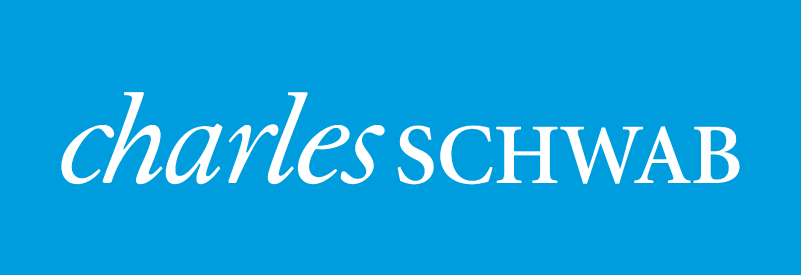Markets in December navigated several crosscurrents including weakening trends across the global economy, a Chinese exit from its zero-Covid public health policy, the BoJ abandoning its yield curve control policy, and a continuation of hawkish global central bank policies. Decelerating inflation trends remained evident throughout the month with wage inflation and tight labor markets both key concerns for policy makers.
While Q4 was positive, U.S. equity markets faltered in December, giving back a chunk of October/November gains while international markets managed to post slight gains with China, Emerging Europe, Hong Kong, Western Europe, and Japan all in the black for the month. The S&P 500 -5.76% return in December (-18.1% for 2022) placed it among six other months in 2022 where the S&P 500 declined by at least 2.5%, a return pattern typically reserved for recessionary periods and ensured its worst return since 2008. The equal weight S&P 500 finished the month at -4.76% and 2022 at -11.95%.
Bond markets in December were slightly negative with the 10yr UST yield edging slightly higher to close up 0.20% at 3.88% and the 2yr UST staying relatively flat to close at 4.41%. High yield credit spreads widened slightly from 4.55% to 4.91% while investment grade spreads were largely unchanged. The Barclays Aggregate lost 0.45% for December to close the year down a record 13%.
Market Anecdotes
- 2022 left the S&P down 18%, due primarily to multiple compression, closing with a P/E multiple of 16.7x, a valuation almost exactly at the 25-year average.
- A painful look back at 2022 shows the Barclays Aggregate Index down 13%, the worst return on record by a factor of 4x, a significant contributing factor to the third worst outcome for a 60/40 portfolio since 1950.
- Stocks in the Russell 1000 saw their market caps fall by close to $11tn in 2022. The tech sector got hammered the most due to rising interest rates, losing close to $4.4tn with Consumer Discretionary slotting in 2nd with $2.6tn of market cap wiped out.
- With every year end comes an annual data dump of calendar year market history lessons beginning with Bloomberg pointing out that the S&P 500 has fallen two straight years only four times since 1928 (WWII, Great Depression, dot-com bubble, 1970’s oil crisis).
- A strong consumer underpins most bullish/constructive views looking into 2023 – a view bolstered by consumer balance sheets, savings, debt service, and the healthy job market.
- With ISM Services and Manufacturing Indexes both falling below 50, a reminder of the predictive nature and efficacy warrants consideration.
- With core inflation ex-shelter being highlighted by the Fed as a key focus point with monetary policy implications, the trend is clear but importantly, the terminal level remains very unclear.
- Real personal disposable income grew in the back half of 2022 after declining for five consecutive quarters – a strong potential bullish tailwind for 2023.
- A second consecutive cooling U.S. CPI reading came with fairly broad-based price deceleration with energy, used vehicles, airfares, and medical care services declining and the pace of shelter inflation beginning to slow down.
- Arbor Data Science charted the annual release of Google search trends, revealing a surprising absence of economic or financial market related searches. Not surprisingly, 2022 trends were dominated by searches for ‘shortages’ of various products including sriracha, baby formula, tampons, diesel, and adderall.
Economic Release Highlights
- The December jobs report came in stronger than consensus with higher job creation (223,000 vs 200,000) and lower headline unemployment (3.5% vs 3.7%). Labor force participation ticked higher from 62.2% to 62.3%.
- Average hourly earnings growth in December came in below consensus for both MoM (0.3% vs 0.4%) and YoY (4.6% vs 5.0%) readings.
- The JOLT survey registered 10.458mm job openings, higher than the consensus spot forecast of 10.1mm and above the high end of estimate range of 10.00mm-10.33mm.
- The ISM Manufacturing Index came in at 48.4, a second consecutive decline but slightly higher than consensus forecast of 48.1 and within the estimated range of 47.5 – 49.0. The ISM Services Index surprisingly came in well below consensus estimate (49.6 vs 55.0) and dipped into contraction territory.
- U.S. PMI’s (C, M, S) of 44.6, 46.2, 44.4 came in below consensus across all three measures. Japan’s PMIs of 50.0, 48.8, 51.7 came in above consensus. Eurozone PMIs of 48.8, 47.8, 49.1 were also higher than forecast.
- November’s J.P. Morgan Global Manufacturing PMI registered 48.6, down slightly from the prior month reading of 48.8.
- Retail Sales were softer than forecasted (-0.6% vs -0.2%) but within the consensus range of -1.1% to 0.4%. YoY retail sales growth is up 6.5%.
- The Case-Shiller Home Price Index registered -0.5% MoM and +8.6% YoY price changes, both ahead of the spot forecast and within the consensus range respectively. Pending Home Sales fell 4%, below the spot forecast of -0.5% and the low end of the range.
- The December Housing Market Index came in at 31 vs expectations of 34 and below consensus range of 32-35. Housing Starts (1.427mm) and Permits (1.342mm) came in above and below their forecasts respectively. Existing Home Sales of 4.09mm was slightly below consensus but within the consensus range, down 7.7%MoM and down 35.4% YoY.
- Industrial Production fell 0.2%, on the low end of the range and spot forecast of 0.1%.
- NFIB Small Business Optimism Index registered 91.9 vs consensus estimate of 90.8.
- Consumer Confidence reading for December came in well above the point forecast (108.3 vs 101.0) and consensus range of 98.0-103.0.
- The third and final estimate of Q3 U.S. GDP was revised higher from 2.9% to 3.2% (A/R) with Personal Consumption revised up from 1.7% to 2.3% (A/R).



